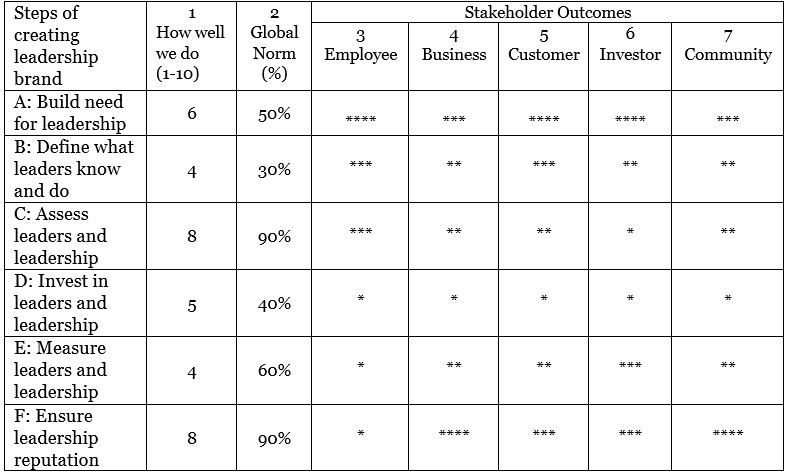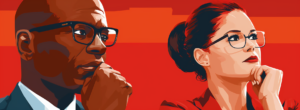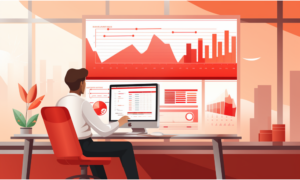The value of an organization guidance system in 2020
- 6 Min Read
Dave Ulrich, Alan Todd and Norm Smallwood give us the full run-down of how an organizational guidance system could benefit your organization, and why now is the right time to implement this.
- Author: Dave Ulrich
- Date published: Sep 2, 2020
- Categories

As a business or HR leader, the following scenarios may be familiar to you. You may find them to be challenges that you have dealt with in the past or anticipate dealing with in the coming months. But what if you had solutions to these scenarios and answers to the questions? In this article Dave Ulrich, co-founder, The RBL Group, Norm Smallwood, Co-founder, The RBL Group, and Alan Todd, Founder, CorpU outline how an organization guidance system could be the answer.
Leadership case: A company has delivered well-received development programs for high-potential leaders. They want to refresh these development efforts to continually prepare and upgrade their future leaders. Question: Where should we focus our efforts to improve our quality of leadership?
Talent case: An organization, emerging from the global pandemic, has pivoted to a more digital business strategy. They have defined new market opportunities and declared where they will play and how they will win in new markets. Question: What talent initiatives should we sponsor to make sure that our people can deliver our new strategy?
Organizational case: An organization has espoused a new strategy to respond to changing business opportunities. Leaders now recognize the need to reinvent their organization to deliver on this strategy. They realize that their new ‘organization’ is not just about restructuring, but also about creating the right organizational capabilities (e.g culture, innovation, agility, efficiency, collaboration, information asymmetry) to deliver a strategy that will meet customer and investor expectations. Question: What should our organizational capabilities be so that we respond to changing market conditions and accomplish our strategic goals?
Human resources case: A CHRO wants to make sure that the HR department contributes to business success. They accept that HR is not about HR policies, procedures, and programs, but about helping the business succeed in the marketplace. Question: How can the HR department emphasize actions that have the most impact?
To deal with the above cases and answer the questions, we propose an organization guidance system (OGS).
How does an organization guidance system work?
Guidance is not a new concept. Students receive guidance both on what career best fits their skills and the courses to take to accomplish their career goals. Retirees receive guidance about how to reach their retirement goals. Investors receive guidance about a firm’s anticipated performance and their success at delivering on promises. Automated factories, equipment, satellites, and vehicles rely on guidance systems to control their operations.
An organization guidance system shifts thinking and actions in organizations from being descriptive to prescriptive. Organizational theory, research, and practice describe how organizations operate: the competencies leaders possess, best practices in talent activities, cultural descriptions, and so on.
An OGS goes beyond this by starting with the desired outcomes from key stakeholders inside and outside.
Like students, retirees, investors, or automated equipment, once desired outcomes are articulated, an OGS informs choices about how to best reach the outcomes. Guidance is less about what is done and more about what should be done. Consistent with the above cases, we suggest four pathways for an OGS:
- quality of leadership
- talent initiatives
- organization capabilities
- HR effectiveness.
For each of these pathways, we have identified specific activities that theory, research, and experience suggest will have an impact on the stakeholder outcomes.
For example, we have identified six steps (see Figure 1) to create a leadership brand. Traditionally, individuals would rate each step (column 1) and compare themselves to global norms (column 2). They could then work to overcome weaknesses (row B, D, E) or build on strengths (row C and F).
Moving beyond this description, the leadership pathway of the OGS allocates the relative impact of each of the six steps on each of the five desired outcomes (columns 3 through 7 from 1 to 4 ‘stars’). In this illustrative example, building a business case (row A) has the highest overall impact across the five result areas, but there are specific leadership activities for each of them (for example, employee results come more from B and C; business results from F; investor results from E and F).

Now is the time for OGS
An OGS shifts leadership improvement from overcoming weakness or improving on strengths, to focus on leadership activities that deliver desired outcomes.
An OGS for talent moves beyond seeking to identify and learn from best practices, to identifying those talent practices that deliver desired outcomes. An OGS for an organization goes beyond describing capabilities to prioritizing the right capabilities for key outcomes. An OGS for human resources helps define HR effectiveness as the actions that have the most impact on key outcomes. In short, the cases and questions above can be solved and answered with an OGS.
What’s more, we feel the time is right to implement this. The unprecedented demands of the pandemic, social strife, and economic downturn increase pressure to discover innovative solutions.
While many innovative solutions have been proposed, guidance helps identify the best solution based on empirical data. Secondly, technology has enabled digital information that moves from descriptive dashboards and scorecards to insights based on big data to guidance to determine which activities provide specific outcomes. Thirdly, the abundance of research on leadership, talent, organization, and HR suggests specific relationships between activities in each pathway and stakeholder outcomes. Finally, analytics has advanced to ferret out the relative impact of specific activities on key outcomes (e.g. variance decomposition).
In brief, now is the time to move to an OGS that offers empirical prescriptions about how leadership, talent, organization, and HR deliver key outcomes.
How to access this for free through RBL
For the last year, the RBL Group and CorpU have partnered to create an OGS by defining the four pathways and synthesizing theory, research and experience into choices for each pathway, measuring those choices, and doing pilot studies with over 500 early adopters in over 200 organizations to validate and upgrade the OGS.
We now offer this free of charge to any leader who wants to answer the ‘what if’ questions above and guide their leadership, talent, organization, and HR practices. Simply visit www.rbl.ai to get started.









